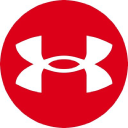Stock Risk Measures for Under Armour Inc-Class C
A quantitative factor review as of September 30, 2021.
- Company Info - Description, identity and sector data.
- Share Data - Stock earnings and key dates.
- Market Risk - Beta, size, liquidity and momentum measures.
- Financial Risk - Earnings and dividends.
Updated: October 05, 2021
See how we arrive at an overall risk score of
49
for UA below.
UA Risk Report
Overview
Our quantitative data points are meant to provide a high-level understanding of
factors in equity risk models for Under Armour Inc-Class C. Portfolio managers use these
models to forecast risk, optimize portfolios and review performance.
We show how UA stock compares to 2,000+ US-based stocks, and to
peers in the Manufacturing sector and All Other Miscellaneous Textile Product Mills industry.
Please do not consider this data as investment advice. Data is downloaded from
sources we deem reliable, but errors may occur.
Company Info
Business Description
Identity
- Symbol: UA
- FactorPad FPID: f71pqv
- SEC CIK: 0001336917
- Share Class FIGI: BBG009DTD8J0
- Location: Baltimore, Maryland US
- Web: https://www.underarmour.com/
Sector and Industry
- Sector: Manufacturing
- Industry: All Other Miscellaneous Textile Product Mills
- SIC Code: 2329
Share Data
Shares
- Shares Outstanding: 233,919,099
Earnings and Dividends
- Trailing 12-month earnings: 0.79
- Next earnings date: 2021-11-02
- Dividend yield in last 12 months: 0%
- Ex-dividend date:
Market Risk Measures
Many of the following risk metrics are standardized and transformed into
quantitative factors in institutional-level risk models.
Rankings below represent percentiles from 1 to 100, with 1 being the lowest
rating of risk.
Systematic Risk
Stocks with higher beta exhibit higher sensitivity to the ups and downs
in the market. (↑↑)
-
Beta: 1.14 |
All: 57
|
Sector: 53
|
Industry: 20
Company Size
Stocks with higher market capitalization often have lower risk. (↑↓)
-
Market Capitalization: $8,850,442,254 |
All: 35
|
Sector: 35
|
Industry: 30
Trading Liquidity
Higher average daily dollar volume over the past 30 days implies lower
liquidity risk. (↑↓)
-
Daily Dollar Volume: $47,006,352 |
All: 43
|
Sector: 44
|
Industry: 80
Price Momentum
Higher price momentum stocks, aka recent winners, equate to lower risk for many
investors. (↑↓)
-
Stock Price Change (1-Year): 70.78% |
All: 29
|
Sector: 24
|
Industry: 100
Financial Risk Measures
Style risk factors often include measures of profitability and payout levels.
Earnings Yield
Companies with higher earnings generally provide lower risk. (↑↓)
-
Earnings Yield (E/P): 4.51% |
All: 42
|
Sector: 33
|
Industry: 20
Dividend Yield
Companies with higher dividend yields, if sustaintable, are perceived to
have lower risk. (↑↓)
-
Dividend Yield (D/P): 0% |
All: 81
|
Sector: 76
|
Industry: 70
UA stock risk
UNDER ARMOUR INC-CLASS C stock beta
UA risk report
UA f71pqv
UA risk analysis
UA volatility
UNDER ARMOUR INC-CLASS C credit risk
UA liquidity risk
UA leverage
UA valuation
UA systematic risk
UA specific risk
UNDER ARMOUR INC-CLASS C volatility
UA analysis
UA financial ratio
